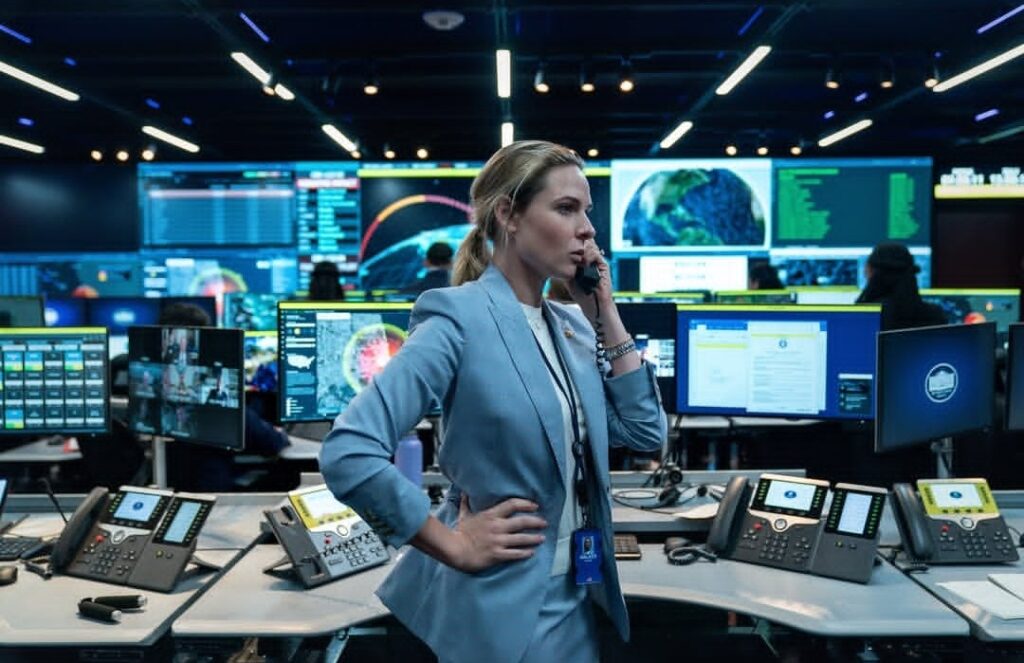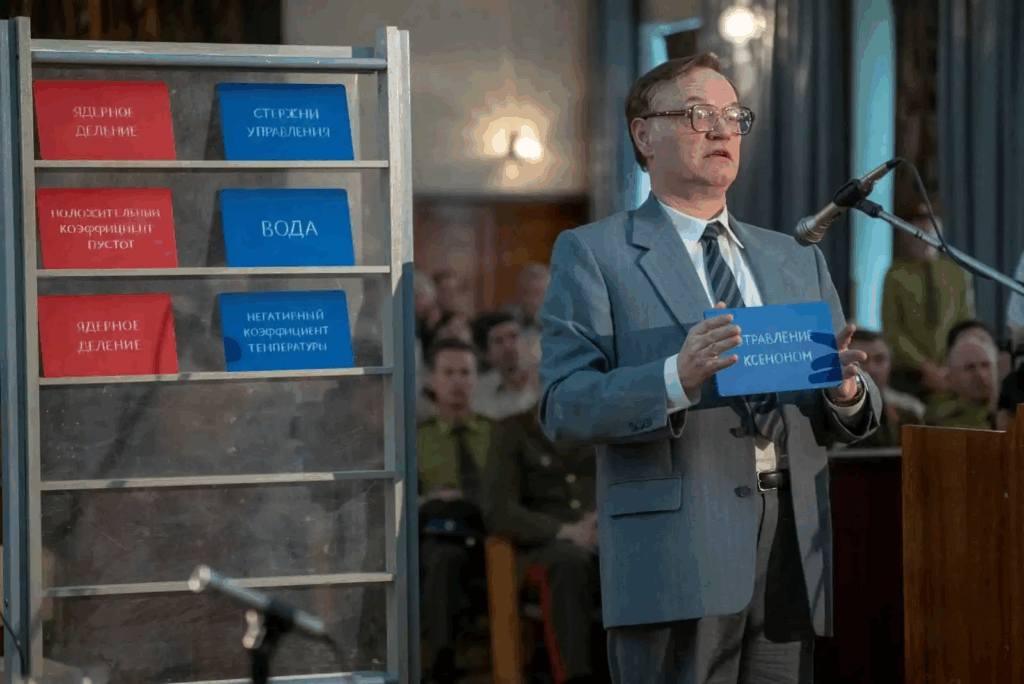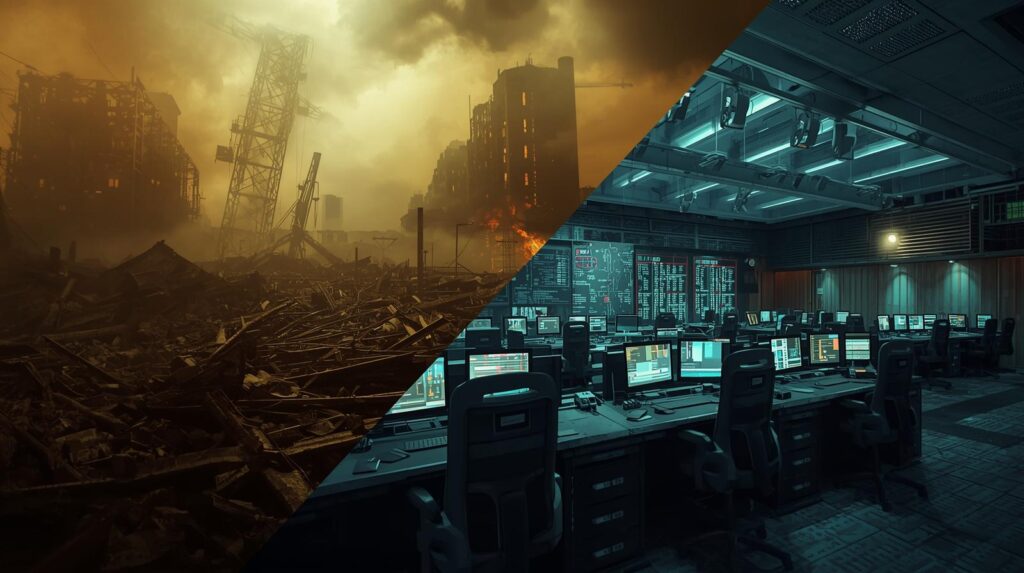Command Control of Error and the Price of Lies: Chernobyl & Pentagon

Modules, panels, display screens, control sticks, buttons, graphics, numbers, and operators. All of these define an integrated control and monitoring system. Also, all parts are interconnected like a chain in this system. Command Control of Error and the Price of Lies: Chernobyl & Pentagon questions the relationship between technology and human intelligence’s decision-making capacity.
Command control centers, remote tracking devices, cameras, imaging and control software and hardware are powerful tools for current surveillance & security systems. However, in the lack of human intelligence, attention and decision-making mechanisms, they do not provide a exact solutions to us. In similar to this, operators needs to follow patterns, keep the statistical records of possible scenarios. Finally, they intervene some errors in times of crisis.

The reason I’m bringing up this whole topic is because of the Chernobyl series (2019) I watched over the past two days and a Netflix film that recently prompted a statement from the US Department of Defense (now the Department of War): A House of Dynamics.
It’s a series about a nuclear missile launched at the US being detected by a satellite and hundreds of people racing against the clock in the command and control room. We watch a nuclear missile heading towards Chicago and the US government’s immediate response in the film.
In this film, The Secretary of Defense try to manage the situation in the command control room. But, he learns a inevitable fact from multiple screens and phone calls. What they have is just $50 billion missile defense system that only has a 50% success rate.
We see remarkable points in this film with reqlistic standpoints. For instance, the Secretary’s reactions, the desperation of the soldiers watching the missile approaching Chicago on screens and searching for their loved ones in the final minutes. The deliberations and convictions of crisis management officials trying to make phone calls and obtain information from Russia and China.
Loss of Command and Control: Fatal Error on Screen and Loss of Balance

Chernobyl exacted an unforgettable price from humanity in the last quarter of the 20th century. In the Belarus and Ukraine region, a 2,600-square-meter enclosed area remained. 300,000 people who were forcibly displaced and a significant increase in cancer rates have led to a wave of deaths over the years. (estimated between 4,000 and 93,000.
In the image below, Legasov explained the increased reactivity caused by the collision and fission of the Uranium atom by placing a red card on the left side. (this needs to be balanced because the increase in reactivity never stops). After that, the function of the Boron control rods as a braking system that balances the activity by placing a blue card on the right side (to reduce reactivity). (Legasov’s scene before the Soviet court was impressive. With the red and blue cards in his hand, he laid out how the process unfolded step by step, minute by minute.)

He then showed the importance of cold water in reducing the high temperature in the system by placing another blue card. And on the left side, another red card representing the positive void coefficient, which increases the temperature rise in the reactorm
At this point, the balance was irrevocably disrupted. Another important point was a fatal flaw and cost-cutting in the shutdown system. The fact that the control rods connected to the shutdown system were made of graphite rather than boron caused the reaction to skyrocket like fireworks at that point. Legasov, who raised this issue in court, greatly disturbed the Soviet authorities in the series. KGB agents and military officials were also present at the trial, witnessing all the discussions and voices of protest were raised.
Cultural Score In The Crises Managament
Particularly, we know that a small error in a system’s protocol can lead to an irreversible chain of errors like regional and global disasters. One of them was Chernobyl disaster.
Due to the 4th reactor being operated at half power as a result of a 10-hour delay (a decision made by the operators during testing) released as uranium fissioned, acted like a poison in the system and did not dissipate. Ultimately, this element accumulated and poisoned the core.
Legasov was actually revealing something very simple. Everything stemmed from the increase and decrease in the reactivity that produced electricity. An imbalance that grew in a vicious cycle led to a major disaster. According to Legasov, the only thing the operators did was to maintain this balance. You don’t need to be a nuclear physicist for that.

“When the truth bothers us, we tell lie after lie. Until we can no longer remember that the lie is there. With every lie we tell, we become indebted to the truth. Sooner or later, that debt must be paid.” Valery Legasov
What debts and costs have all nations and societies paid as a result of a lie up to now? The examples of the US in Vietnam, Iraq, and Afghanistan; Japan’s cultural memory; and Russia’s closed-box competition and prestige wars. The truth always lies in wait. This was Chernobyl’s gift. According to Garboçav, it was the final point of a superpower’s collapse.
The secrets and lies of states, their symbolic glories and unshakeable authorities cause the truth to be distorted and controlled. The decision-making mechanisms and beliefs of cultures and individuals in a given geography shape the logic and quality of the response.


